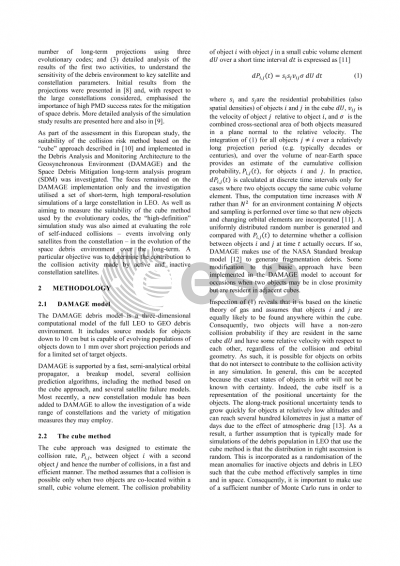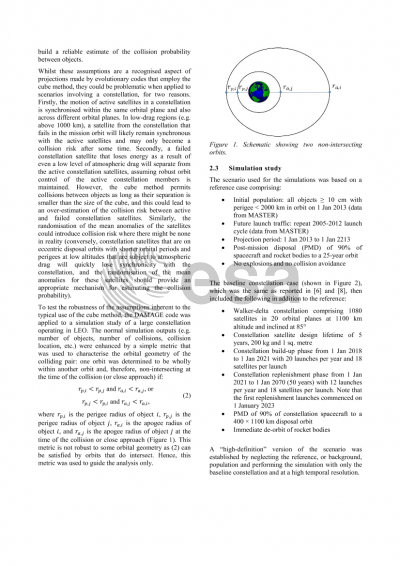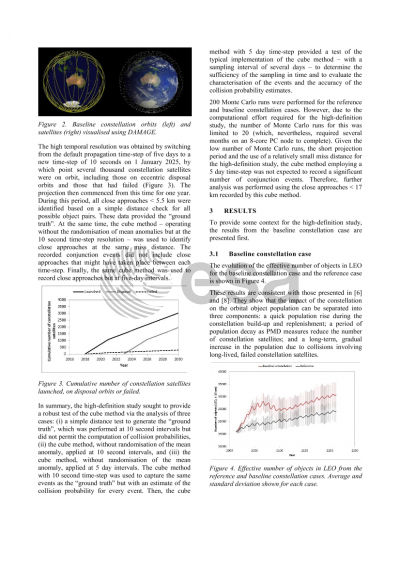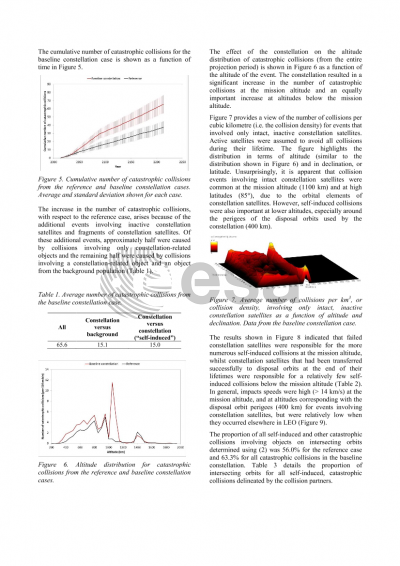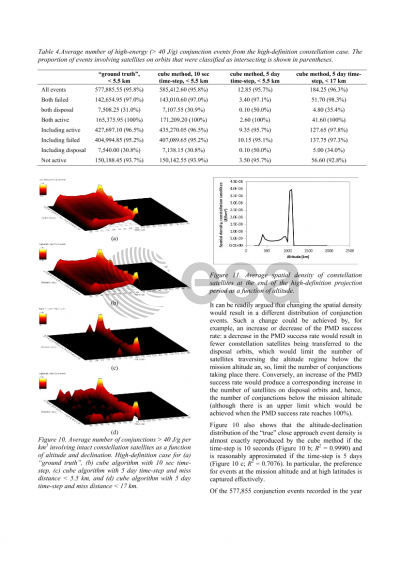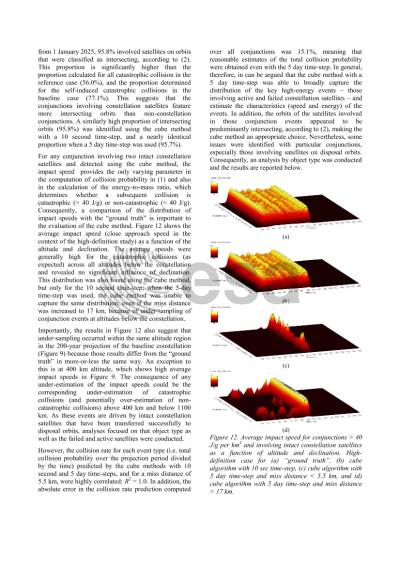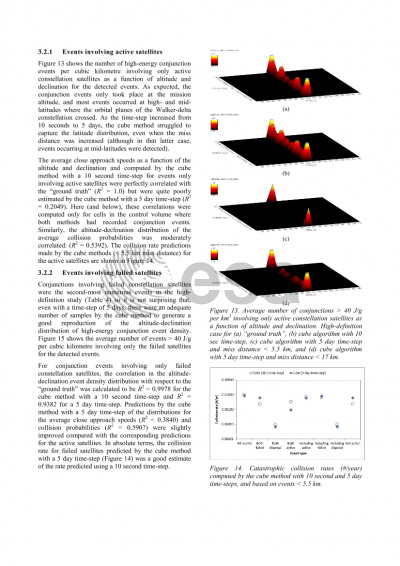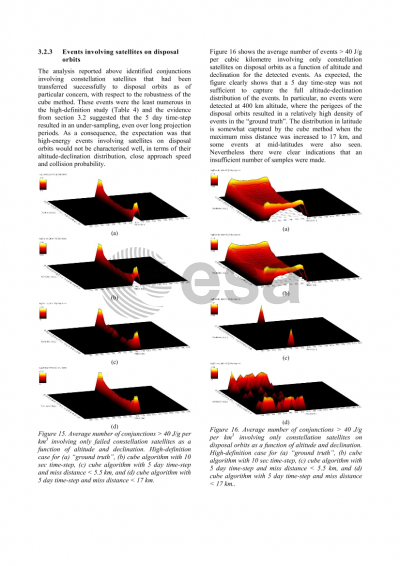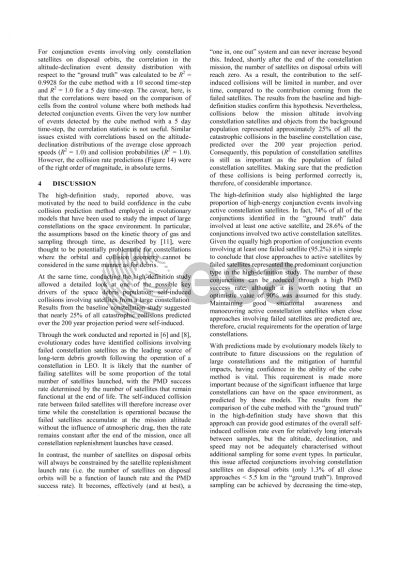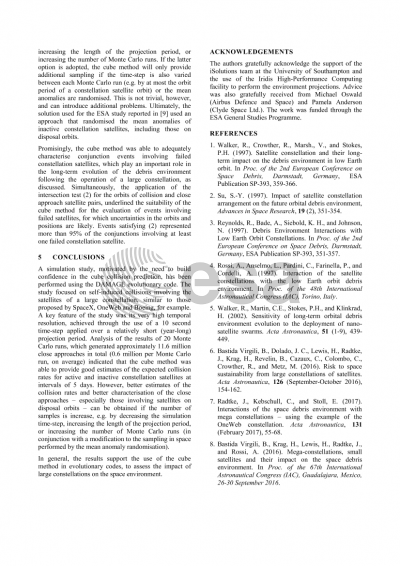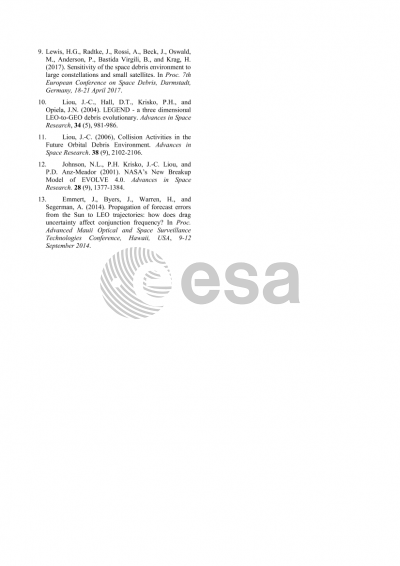Document details
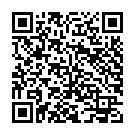
Abstract
Large constellations of communications satellites in low Earth orbit (LEO) can provide considerable benefits due to the global coverage and low latency. However, they also represent a possible risk to other space users and to the long-term health of the space environment, due to the increase in associated space traffic and if appropriate debris mitigation measures are not implemented. A team comprising engineers from industry, academia and the European Space Agency have performed an assessment of the potential impact of small satellites and large constellations on the space debris environment. This assessment included: (1) a review of historical and proposed future small satellite activities and associated technologies; (2) a large number of long-term projections using three evolutionary codes; and (3) detailed analysis of the results of the first two activities, to understand the sensitivity of the debris environment to key satellite and constellation parameters. To ensure the reliability of the modelling approaches for this work – in particular the collision risk methods employed by the evolutionary codes – and to understand the interactions between satellites within constellations, a set of short-term, high temporal-resolution simulations were performed using the DAMAGE code. The results of this study are reported in this paper.
The simulations made use of a synthetic constellation of 1080 satellites in 20 orbital planes inclined at 85 degrees. Only constellation traffic was included as the focus of the study was on the self-induced collision risk (i.e. within the constellation satellite population), which tends to drive the long-term environment evolution. In the simulation, the constellation build up took place from 1 January 2018 through 31 December 2020, with full operation from 1 January 2021. Satellite lifetimes were taken to be five years, with the first replenishment launches commencing on 1 January 2023. The high temporal resolution was obtained by switching from the default propagation time-step of five days to a new time-step of 10 seconds on 1 January 2025, by which point several thousand constellation satellites were on orbit, including those on eccentric disposal orbits and those that had failed. The projection then commenced from this time for one year. During this period, all close approaches less than approximately 17 km and involving any constellation object were recorded. In addition, the cube collision risk algorithm was used to identify close approaches at five-day intervals and under a variety of assumptions. These two datasets were then analysed and compared. The results thus provide an understanding of the conjunctions that can occur within large constellations, as well as an understanding of the consequences of sampling in time and space via the cube collision risk algorithm.
Preview

